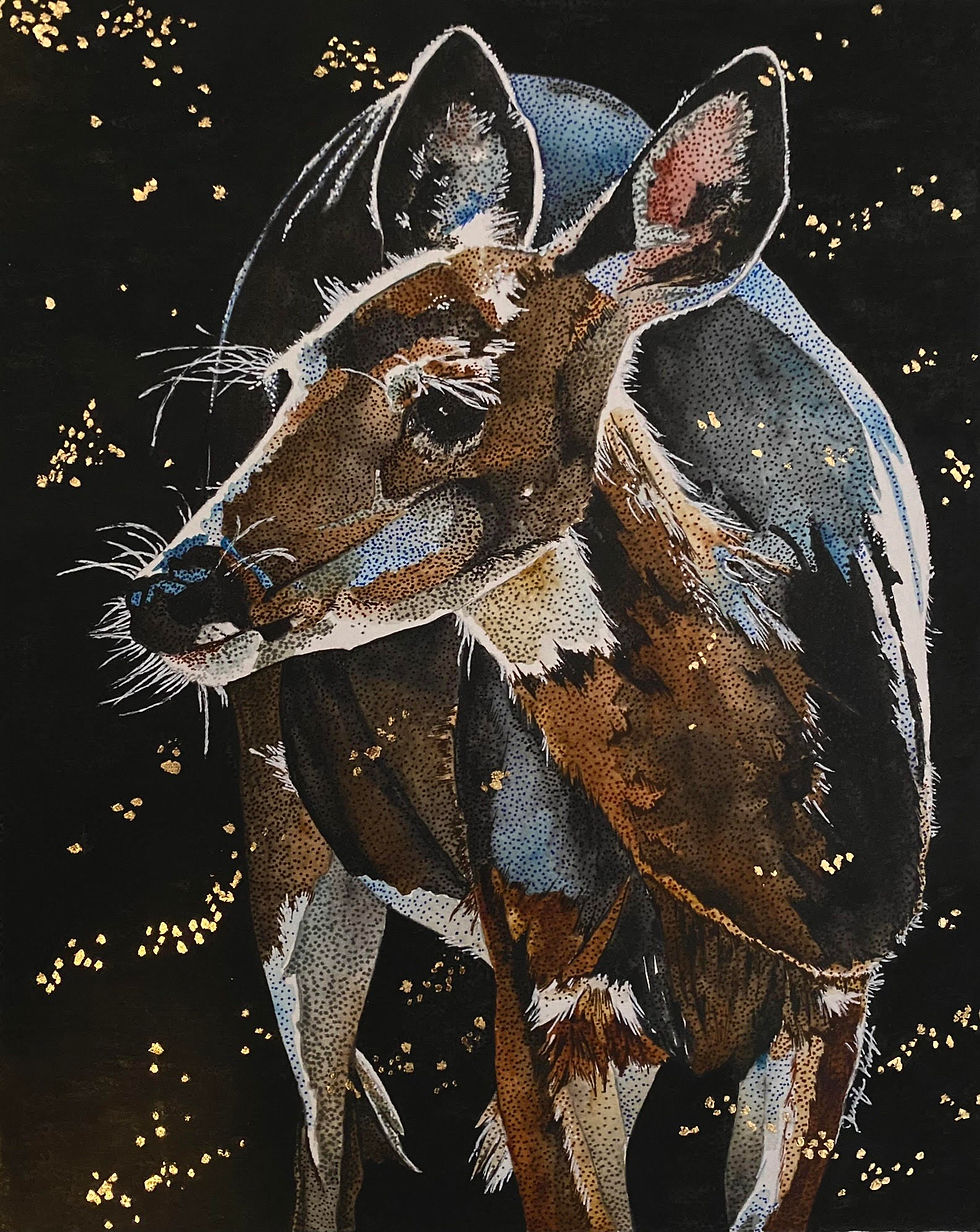Finding Your Image and Preparing Your Canvas
- Jennifer Krueger

- Aug 11, 2020
- 4 min read

There are about 6 steps I always follow before I can begin painting my piece.
Step 1: Find Your Image
For most of my wildlife images, I use Wildlife Reference Photos (www.wildlifereferencephotos.com). The photographs are all taken by professional photographers, and it only costs $5 USD per image. Paying for your images guarantees your ability to use the photograph without any worry of copyright infringement and is the safest bet when creating any artwork. If you are on a strict budget, the other site I use (that is royalty free) is Unsplash (www.unsplash.com). All of the images are free to use - although the search engine is a bit scattered (prepare to get a lot of images of houses if you are looking for a "house finch"). If I can't find what I'm looking for on either of those, I will reach out to photographers on social media sites and see if I can use their photos. So far, I haven't had anyone turn me down, so I definitely always recommend it!
For this particular piece, I went through Wildlife Reference Photos and found a beautiful image of a giraffe taken by Ben Spoelhof. Please make sure you credit the photographers for their images, and if you can find them on social media, share their links and website (if possible). This can create a working relationship between you and the photographers and really, it's just a nice thing to do.
Step 2: Find Your Canvas
Right now, my canvases are 3/4 inch thick pieces of wood panel that I bought from Home Depot. I bought a 4ft x 8ft panel and had it cut into three pieces:

I am currently working on the 1ft x 5ft (12in x 60in) piece. The 3ft x 5ft piece was already used for my Amur leopard (you can read more about that by going to the section on my "Current Series/Work"), and the 3ft x 4ft piece is waiting on the side for now.
Step 3: Gesso Your Canvas
I use gesso to prime the board, and let me tell you: getting a good gesso is important. My favorite so far is Blick Artists' White Gesso. It runs for $20.15 on dickblick.com, and although that may seem a bit expensive for a 16 US FL Oz container of gesso, it is thick and extremely opaque, so I only need two coats and barely put a dent in the container. I have tried the cheap stuff from Amazon, and I promise you, buying a better quality gesso will not only save you your time and patience, but is cheaper in the long run since you don't have to use as much.
Step 4: Cut the Watercolor Paper
I found that cutting my paper into 3in x 3in squares works perfectly for my style. I actually came up with those particular dimensions when I was working on the first painting in this series (the Sumatran tiger). I draw my larger paintings using the grid method (more on that coming up), and the 3in x 3in squares fit perfectly when transferring my image. I use a Fiskars roller cutter, which does a fine job; although my squares are a bit off sometimes, which I attribute more to where I place the paper on the cutting board than anything else.

Step 5: Glue the Watercolor Paper
I use Golden Regular Gel Matte Heavy Body Acrylic Medium to adhere my paper. I have used Heavy Gel Semi-Gloss and Soft Gel Semi-Gloss before, and they are all perfectly fine in my opinion. I switched to matte since if any of the gel medium ended up on the paper it left a glossy sheen to it, which I wasn't too keen on. It is important to really apply a generous amount of gel medium to the edges of the paper to make sure they adhere properly.
Once the gel medium and paper are applied, I place a piece of wax paper over the top and weigh it down with books to make sure the paper adheres evenly. I then leave it sit for 24 hours. If you come back 24 hours later and the paper is lifted, just apply a little more gel medium and re-weigh it down. It might take a bit of time, but the better you get everything weighed down and adhered now, the fewer touch ups you'll have to do later.
Since I am planning on changing up this series a bit and using different shapes of watercolor paper, textiles, and other mediums, I decided to "fade out" the watercolor paper on this one.
Step 6: Draw Your Image
Like I said above, I use the grid method to draw my pieces. I printed out the image of the giraffe and broke it into 1/2in x 1/2in squares (the top/bottom are labeled A - D, with the sides labeled 1-20), which transfers perfectly to the 3in x 3in squares on the canvas. I then draw square by square, transferring what I see in the photograph onto the canvas. Most of the time, the printed image is a bit small to see all of the details, so I also have the original image zoomed in on my laptop to fill in any gaps.
One day I may invest in a projector to make transferring the images a lot easier and take way less time; however, for now I still enjoy the drawing process and all of this preliminary work.
Now though, it's time to get into the truly fun part of the process! Let's start painting!
Jennifer





















Comments